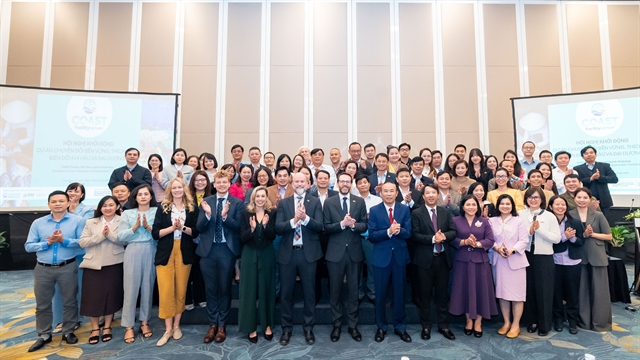 Economy
Economy


|
| Director General of the Asia-Pacific Economic Centre Võ Đại Lược. Photo doanhnhansaigon.vn |
Director General of the Asia-Pacific Economic Centre Võ Đại Lược talks to Doanh nhân Sài Gòn (Sài Gòn Businessman) online newspaper about the need for Việt Nam to have policies to adapt to increasing labour costs
The price of Vietnamese labour is increasing. What do you think this means for the future?
It is an inevitable trend that the cost of Vietnamese labour will increase as the inflation rate keeps at 4 per cent and the annual minimum wage rose 6.5 per cent in 2018 and 5.3 per cent in 2019.
The increase in labour costs has two meanings. First, the economy can benefit from increased demand. When workers earn more money, they will spend more and thus help to reduce the export pressure on the economy. However, increasing costs will also have negative impacts. Investment flows that want to make use of cheap labour in Việt Nam will move to other countries with lower costs. Employers will also suffer because they will have to spend more on workers.
Will the increasing labour cost lead to more unemployment in Việt Nam?
This may not happen in the short term because Việt Nam still has many other advantages to attract foreign investors. The biggest advantage is a more stable socio-political situation than a number of other countries in the region, as well as the country’s favourable location. Việt Nam is in a central position in the East Asian region with many seaports helping facilitate production, processing and export activities. That most Vietnamese workers have at least a high school education and are capable of adapting to technology is another advantage.
However, employment reduction could happen in the medium- and long-term periods if the country does not have appropriate solutions to deal with the changes.
In fact, the labour productivity of Viêt Nam is still lower than that of other countries in the region. According to the General Statistics Office, the country's labour productivity in 2018 was equal to 7.3 per cent of that of Singapore, 19 per cent of Malaysia, 37 per cent of Thailand, 44.8 per cent of Indonesia and 55.9 per cent of the Philippines.
Will the increasing labour cost affect the competitiveness of the country and its businesses?
Yes, it will. Higher labour costs will urge investors to make more calculations as they have to pay more for workers. However, I think this is not the key concern of foreign investors because the labour cost is still much lower than that of Singapore, Thailand, Malaysia and the Philippines.
As you mentioned above, Việt Nam needs to develop policies to adapt to increasing labour costs. How should these policies be developed?
With higher labour costs, workers will have motivation to work harder and better and thus the economy will benefit. When their incomes grow, workers can use part of their incomes to improve their professional skills which would help make up for part of the employer’s expenses. While the economy and businesses may benefit from cheaper labour, this would discourage workers. State policies should take these points of views into consideration. VNS




